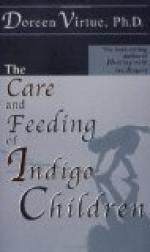How can a baby be taught to be regular in its habits of eating and sleeping?
By always feeding at regular intervals and putting to sleep at exactly the same time every day and evening.
When should regular training be begun?
During the first week of life.
Should a baby be wakened to be nursed or fed if sleeping quietly?
Yes, for a few days. This will not be required long, for with regular feeding an infant soon wakes regularly for its meal, almost upon the minute.
Should regularity in feeding be kept up at night as well as during the day?
Only up to nine or ten o’clock; after that time a baby should be allowed to sleep as long as it will.
At what age may a well baby go without food from 10 P.M. to 6 or 7 A.M.?
Usually at four months, and always at five or six months. Night feeding is one of the most frequent causes of wakefulness and disturbed sleep.
STERILIZED MILK
What is meant by sterilizing milk?
Heating milk for the purpose of destroying germs.
Does all cows milk contain germs?
Yes; even when handled most carefully, milk contains many germs; but when carelessly handled, and in summer, the number is enormous. While most of these are harmless or cause only the souring of milk, others are occasionally present which may produce serious diseases such as typhoid fever, diphtheria scarlet fever, cholera, tuberculosis, and many forms of diarrhoea.
Under what circumstances is it necessary to sterilize milk?
1. In warm weather when it cannot be obtained fresh; hence always in cities and towns during the summer.
2. When one cannot be certain that the cows are healthy, or that the milk has been carefully handled.
3. When the milk is to be kept for any considerable time (i.e., over twenty-four hours), especially if no ice can be had.
4. During epidemics of typhoid fever, scarlet fever, diphtheria, or any form of diarrhoeal disease.
What are the two methods of heating milk?
The first is known as sterilizing, in which the milk is heated to 212 deg. F. for one hour or one hour and a half; the second is known as pasteurizing, in which the milk is heated to 155 deg. or 170 deg. F. for thirty minutes. A temperature of 155 deg. F. continued for thirty minutes is sufficient to kill the germs of the diseases above referred to.
Will milk which has been thus treated keep indefinitely?
No; for although all the living germs may be killed, there are many undeveloped germs, or spores, which are not destroyed, and which soon grow into living germs. Milk heated to 212 deg. F. for an hour will keep upon ice for two or three weeks; that heated to 155 deg. F. for two or three days.




